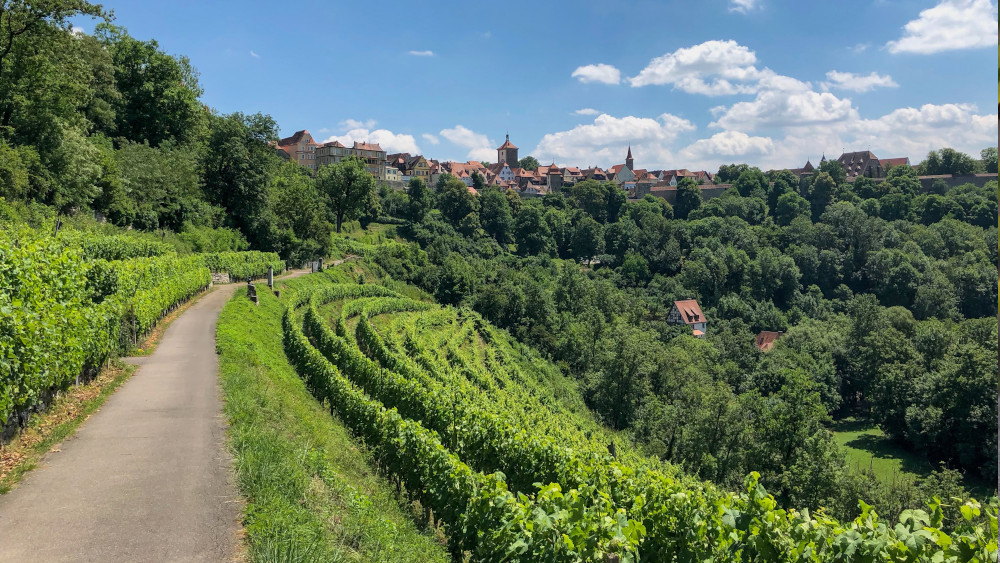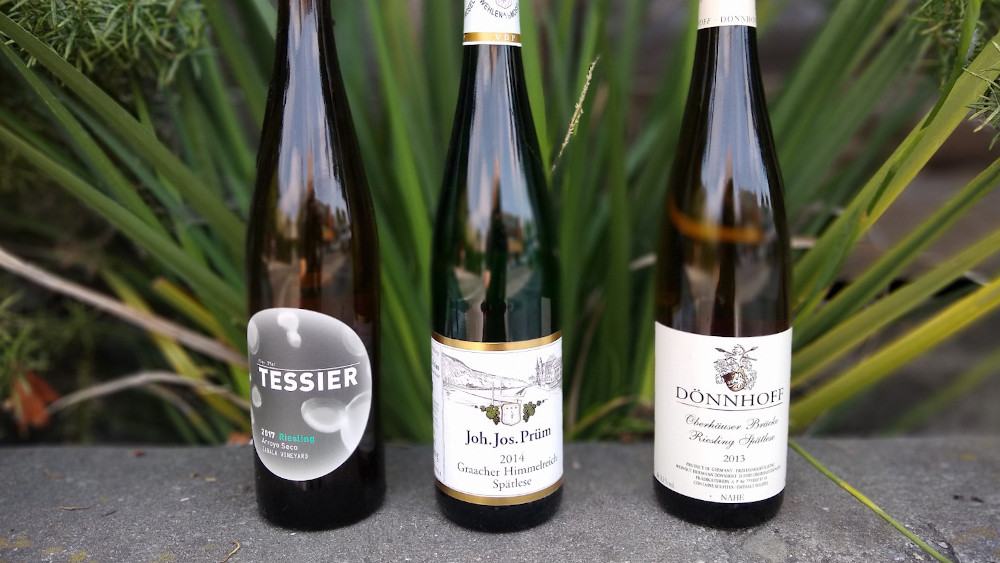In terms of stylistic variety, aging potential, and the ability to reflect terroir, nothing can touch riesling. The riesling grape does best in marginal climates, needing a cool, long growing season in order to achieve phenolic ripeness. Put another way, the best wines made from riesling, like the most interesting people, are usually a product of struggle.

Hillside vineyards in a small German town
Making riesling in its country of origin (Germany) can be a bit of a quixotic endeavor–you are at the northern limit of where grapes can even achieve ripeness. You are farming slate slopes that are so steep that everything has to be done painstakingly by hand. Add factors like climate change, and it’s a wonder that any wine can be made at all. In fact, 2019 marked the first German vintage that was too warm to produce eiswein, a style of dessert wine that relies on the grapes freezing on the vine.
One of the most remarkable things about riesling is the diverse array of styles that it can produce. German rieslings, especially those from the Mosel, tend to have a delicate, filigreed character to them. Typically off-dry and low in alcohol, these wines achieve an ethereal balance between sweetness and acid.

If a Mosel riesling is a ballet dancer, Austrian rieslings are rock climbers–muscular, but lean and chiseled. They are dry and mineral, and while typically fuller-bodied than their German counterparts, still offer a degree of precision that many wines lack. Alsatian rieslings are typically dry, but full-bodied and rich with extract. For Australian rieslings, think bitter pith and zest instead of fleshy fruit, along with, typically, a preponderance of petrol.
Below are a few rieslings worth exploring:
2014 Joh. Jos. Prüm Graacher Himmelreich Spätlese
Featuring steep, southwest-facing Devonian slate soils, the Graacher Himmelreich site in the Mosel is known for the distinctive smoky aroma it imparts.
2013 Dönnhoff Nahe Spätlese Oberhäuser Brücke
Nahe’s smallest single vineyard (1.1 ha) is a monopole located near the Nahe River, which mitigates the temperature and leads to the longest ripening of any of the Dönnhoff wines. Grey slate bedrock with loam and volcanic elements lend a persistent minerality to the wine.
2017 Tessier Winery – Zabala Vineyard
Stylistically in line with Australian riesling, this wine, from the Arroyo Seco AVA in Monterey County, shows lime zest and pith as well as a stony minerality on the palate.
Please stop by Paul Marcus Wines to learn more about this wonderfully expressive grape.
– Layla Khabiri

Leave a Reply
Want to join the discussion?Feel free to contribute!